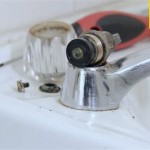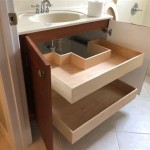How Do I Pick a Bathroom Lock?
Choosing the right lock for a bathroom door involves considering factors beyond simple functionality. Privacy, safety, and ease of use, particularly in emergencies, are paramount. This guide outlines key considerations for selecting an appropriate bathroom lock.
Privacy Considerations
Bathroom locks are primarily designed to ensure privacy. The level of privacy required often dictates the type of lock chosen. For residential bathrooms, standard privacy locks offering basic locking mechanisms are generally sufficient. In commercial settings or bathrooms accessible to the public, more robust options may be necessary to provide a greater sense of security.
Emergency Access
While ensuring privacy is important, emergency access must also be considered. Standard bathroom locks often include a small release mechanism on the exterior side, typically a small slot or button that can be activated using a small tool like a coin or screwdriver. This feature allows entry in case of emergencies like a fall or illness.
Types of Bathroom Locks
Several types of locks are suitable for bathroom doors. Understanding the differences between them is crucial for making an informed decision. Common choices include privacy locks, turn-button locks, and lever-handle locks with built-in privacy features.
Privacy Locks
Privacy locks are the most common type found in residential bathrooms. They typically feature a push-button or turn-button locking mechanism on the interior side and an emergency release slot on the exterior. These locks are relatively simple to install and offer a basic level of privacy.
Turn-Button Locks
Similar to privacy locks, turn-button locks operate via a simple turning mechanism. They offer a similar level of privacy and are often chosen for their ease of use and straightforward installation. These locks also usually include an emergency release mechanism on the exterior.
Lever-Handle Locks with Privacy
Lever-handle locks with integrated privacy functions provide a more robust locking solution. These locks typically use a push-button on the interior lever to engage the locking mechanism and, like other bathroom locks, offer an emergency release feature on the exterior. They can offer a higher level of security compared to basic privacy or turn-button locks.
Installation and Door Compatibility
The installation process varies depending on the type of lock and door. Some locks require simple screwing into the door and jamb, while others may involve more complex mortising. It's essential to choose a lock that is compatible with the door's thickness and existing hardware. Consulting a professional locksmith can be beneficial for complex installations or when working with non-standard door configurations.
Material and Durability
Bathroom locks are exposed to humidity and temperature fluctuations. Choosing locks made from durable materials like stainless steel or brass can ensure longevity and prevent corrosion. Considering the finish of the lock is also important, as certain finishes offer better resistance to wear and tear.
Budget and Aesthetics
Bathroom locks are available at a wide range of price points. While basic privacy locks are generally the most affordable, more advanced options with enhanced security features or designer aesthetics will typically cost more. Balancing budget considerations with desired functionality and style is crucial.
Compliance with Building Codes
When selecting a bathroom lock, it's important to ensure compliance with local building codes and regulations. Certain types of locks may be required in specific settings, particularly in commercial or public restrooms. Verifying compliance before installation can prevent potential issues.
Choosing the Right Lock for Children or Elderly
In households with young children or elderly individuals, choosing the right lock is particularly crucial. Locks should be easy to operate from the inside but also allow for quick access in case of emergencies. Lever-style handles might be easier for individuals with limited dexterity, while emergency release mechanisms should be easily accessible from the outside but not readily manipulated by young children.
Maintenance and Care
Proper maintenance can extend the lifespan of a bathroom lock. Regular cleaning with a mild detergent and avoiding harsh chemicals will help preserve the finish and prevent corrosion. Periodically checking the functionality of the lock and lubricating moving parts can also ensure smooth operation and prevent issues.

How To Open A Locked Bathroom Door 10 Steps With Pictures

Locked Out Of Your Bathroom 8 Ways To Unlock Door

How To Pick Locks Of Indoor Bedroom Bathroom With Paper Clips

7 Ways To Open A Locked Bathroom Door

12 Ways To Open A Locked Bathroom Door Without Key

How To Open A Locked Bathroom Door 10 Steps With Pictures

It S Easy To Pick Some Smart Deadbolts We Aren T Alarmed Wirecutter

How To Pick A Bathroom Door Lock

How To Open A Locked Bathroom Door Push Mrlocksmith Locksmi Tiktok

12 Ways To Open A Locked Bathroom Door Without Key
Related Posts







